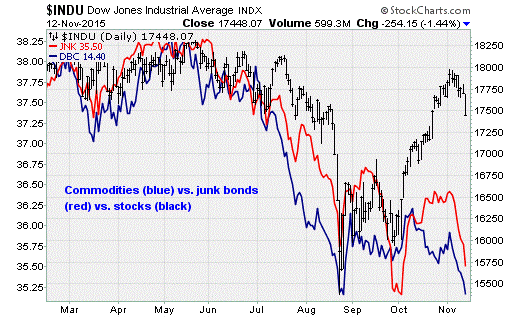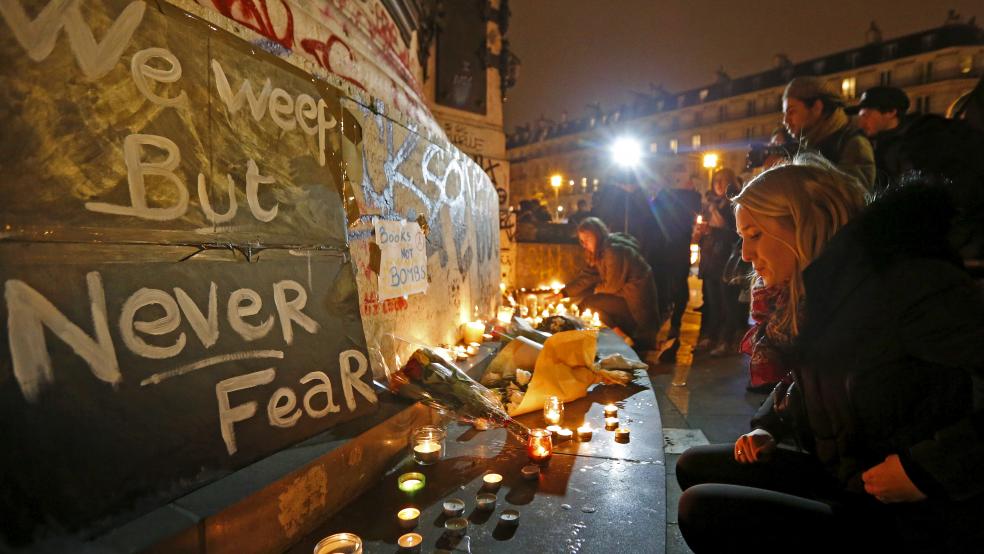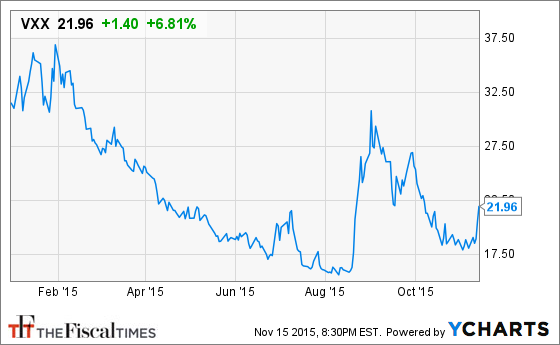Even before Friday’s attacks in Paris, the calm that investors have enjoyed recently had been shattered. The Dow Jones Industrial Average and the S&P 500 tumbled 3.7 percent and 3.6 percent, respectively last week, bringing dramatic ends to six-week winning streaks, as concerns grew over the fallout from a likely Federal Reserve interest rate hike next month.
Whether or not investors grow nervous about the added “headline risk” to stocks from the terror attacks, the "Santa Claus" rally that looked so likely just a couple of weeks ago, driven by an impressive-looking rebound in areas like big oil stocks, has faded badly. The most likely path from here would be a retest of the late-September/early-October lows, based on meltdowns underway in high-yield corporate bonds and commodity prices.
Related: 10 Ways the Fed’s Looming Rate Hike Touches You
The stocks that led the way out of the September nastiness have now lost their vitality. Energy and materials stocks led the laggards down as crude oil dropped back near $40 a barrel, and steelmakers got hit hard by disappointing economic data out of China.
Related: Why Oil Prices Are Headed Lower Again
Now, the Paris attacks could add to concerns about consumer sentiment and spending — concerns that are already elevated after a weaker-than-expected retail sales report for October.
The chart below shows the heart of the market’s problem: A meltdown is underway in high-yield corporate bonds (red line) and commodities (blue). Stocks (black line) have done their best to ignore the warning signs since early October, but the bulls are being forced to acknowledge that a December Fed hike will have a number of ramifications for corporate earnings growth. Most of them aren't good.

For one, further strengthening of the U.S. dollar will weigh on commodity prices and lower the value of foreign earnings when repatriated.
Second, higher credit costs will not only raise default risks, and thus junk bond spreads, but will also slam the brakes on the flow of debt-funded corporate stock buybacks that have played such a big role in this bull market. According to Yardeni Research, S&P 500 companies have spent $2.5 trillion on their own shares between Q1-2009 and Q2-2015.
Related: Here’s Why Black Friday Will Be a Bust This Year
Third, all of this could result in fresh pressure on emerging market economies dependent on commodity exports, like Brazil.
As a result, investors are piling into defensive assets. The Short-Term VIX (VXX) has broken up and out of its recent trading range, including its largest one-day gain since the middle of September. This is a sign panic is in the air again as it becomes clear stocks cannot continue to ignore the selling underway elsewhere in the financial markets.








